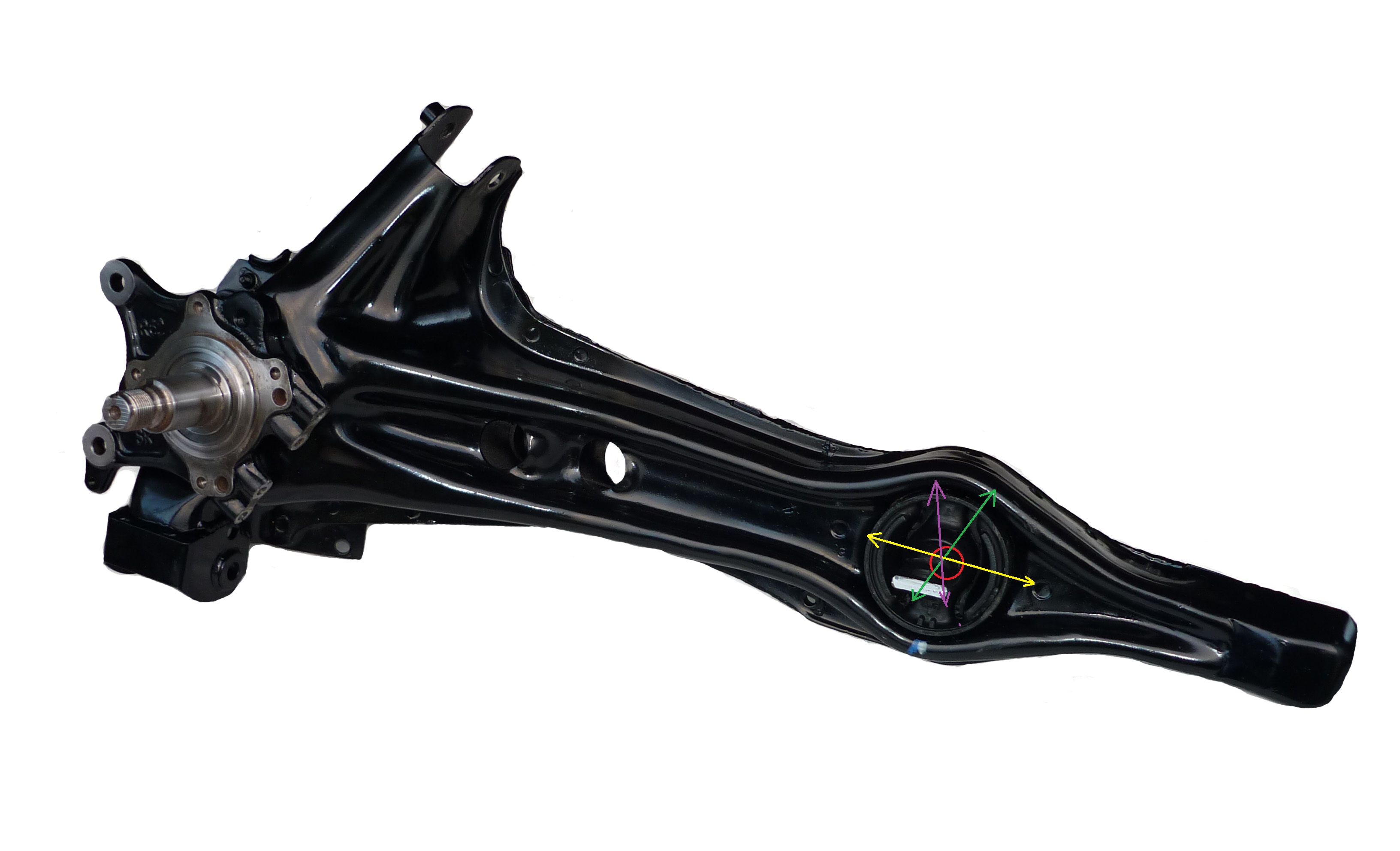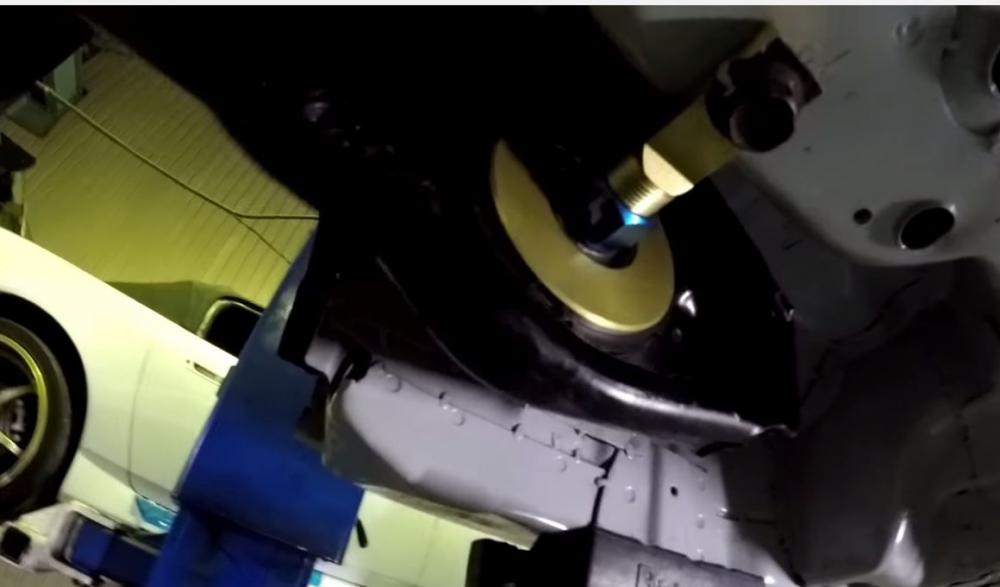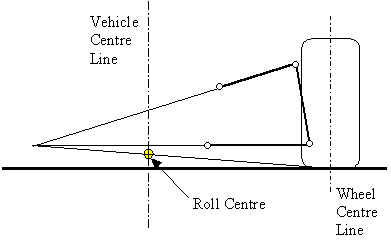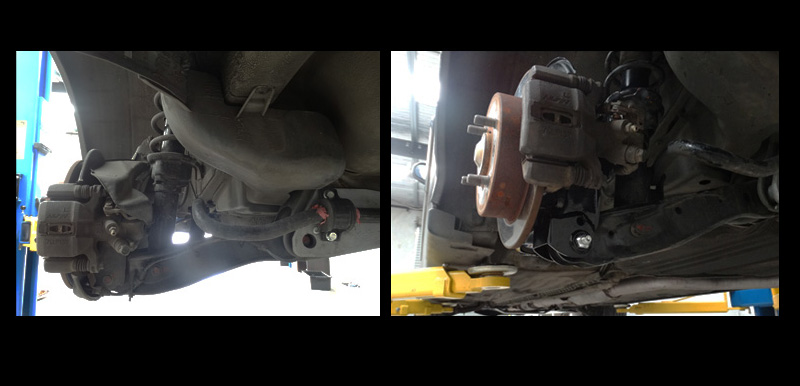So there are three types of RTA spherical bearing replacements currently available for the 90s – 00s FWD Hondas (type 2 and 3 from aftermarket)
Type 1: Oem
Type 2: Spherical where the bearing is allowed to slide
Type 3: Spherical where the bearing is captive between two threaded collars
I’ve indicated the three linear axis of the RTA bush on this image of my trailing arm for clarification
Green axis = transverse
Yellow axis = longitudinal
Purple = vertical

The oem bush constrains the trailing arm in the purple axis but allows restricted movement in the green and the yellow (restricted because you’re flexing the rubber)
The type 2 bush constrains the trailing arm in the purple and yellow axis
The type 3 bush constrains the trailing arm in all axis

I think I took this snap shot from a https://stickydiljoe.com/ video
Why did Honda design the rear suspension this way?
Well any one who has experimented with different rear toe settings on track will attest that (with our FWD cars) you can tune the under/over steer character of the car quite dramatically with rear toe.
If you’ve ever driven a car with oem rubber RTA bushes that are completely flogged they suffer bad over steer
When I ran my car with 0 rear toe its was pretty loose at the rear, to the point where I had a few spins on track
Although when we’re tuning these cars for motorsport we want them to understeer less than and loose at the rear can be desirable in some instances (autoX, tight courses etc)
Honda wants their cars to be safe for mum and dad drivers and so factory tunes them for understeer/neutral handling
For the rear of a FWD that means having toe IN
The short toe arm design is quite brilliant in that it creates toe in for both bump and droop sectors of wheel travel
When a car with the oem bush corners the outside trailing arm can deflect rearward by a small amount, the toe link rotates back slightly (and inward) increasing the toe in on that side from what it would be if the trailing arm was fully constrained in the yellow axis.
In short, oem design is intended to reduce oversteer
Why would you want to change the oem rubber RTA for a spherical one?
– Constrain the trailing arm longitudinally
– More consistent toe. Typically if your running low ride height you’ve got less suspension movement than a stock car so your rear wheels might not see significant toe change from static
I can’t think of an easy way to measure the toe gain due to the defection of the rubber and so my current thinking is that if you’re wanting to tune the rear toe of your car for motorsport then
a spherical is preferable because then you can measure your toe curve and set your static toe accordingly.
Some people claim replacing the rubber RTA bush with a spherical one ruins their handling but who knows if they really understood what they were doing and compensated accordingly
If you ditch the front toe arm then you loose that great characteristic of toe in for both bump and droop
Sure you can set your static toe from the adjustment of that forward spherical bush but from static ride height your toe gain/loss is dictated by the angle of your rear lower control arm
So for any suspension design there is a traverse roll centre (which dictates geometric roll stiffness) and a longitudinal roll centre (which is your squat/anti squat characteristic)
In my mind moving the RTA bush pivot would would change the longitudinal roll centre but only have a very minor effect on traverse roll centre
The traverse roll centre is mostly dictated by the UCA and LCA geometry

When people think of roll centre for Hondas, typically they are thinking about the traverse roll centre because the roll characteristic of the car is what we a most interested in
When you lower the rear of a honda significantly the outboard LCA mount ends up higher than the inboard end and your upper control arm ends up on a steep angle
This geometry change results in the traverse rear roll centre being at or below ground level (significantly lower than the front at any rate)
The result of this is that the rear suspension has less geometric anti-roll than at stock ride height and what people end up doing is compensating for this effect by
using high rear spring rates or huge rear anti-roll bars
I didn’t want to do that so
I modified my trailing arm to relocated the outer LCA mounting point

Which moved the rear roll centre back up closer to stock relationship to the front roll centre.
[irp posts=”410″ name=”JTCC Inspired Civic Sedan Build 13: Single Wiper Conversion”]
